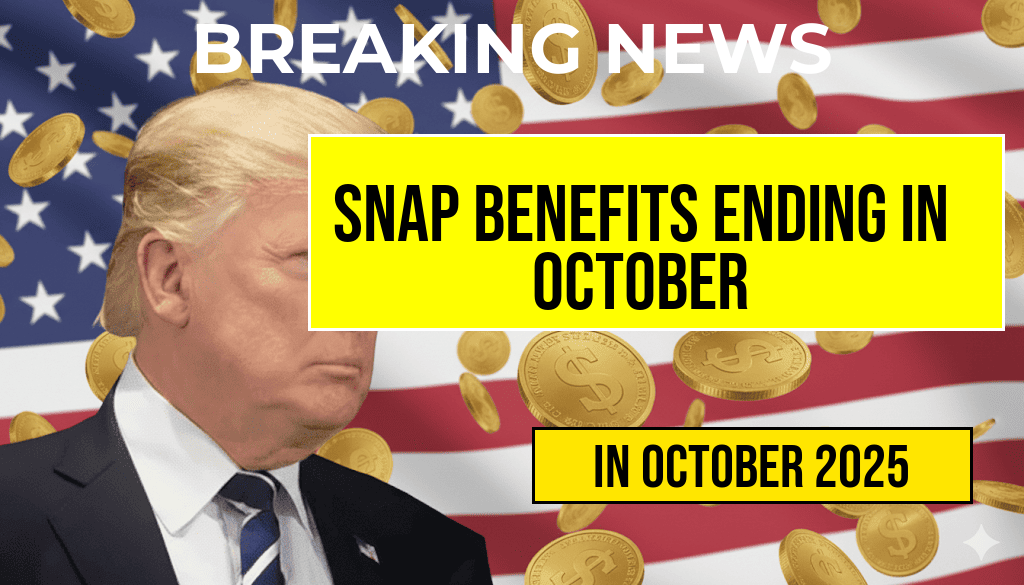The Supplemental Nutrition Assistance Program (SNAP), the largest federal food assistance initiative in the United States, is set to undergo a significant overhaul, resulting in the end of benefits for many recipients after October. The changes, mandated by recent federal policy shifts, aim to streamline the program but are expected to leave thousands without support during the upcoming months. As the deadline approaches, advocates and recipients alike are voicing concerns over the potential increase in food insecurity and the practical challenges faced by vulnerable populations. This overhaul reflects broader debates over the scope and sustainability of social safety net programs, with policymakers emphasizing fiscal responsibility while critics warn of the human toll involved.
Details of the SNAP Overhaul and Its Implementation Timeline
What the Changes Entail
- The primary adjustment involves the reduction or elimination of temporary emergency allotments, which previously supplemented monthly benefits during the COVID-19 pandemic.
- New eligibility criteria will be enforced, with stricter income and resource limits, potentially disqualifying some current recipients.
- States will be responsible for implementing these modifications, with federal guidelines providing the framework.
Projected Impact on Recipients
According to estimates from the U.S. Department of Agriculture (USDA), approximately 1.5 million SNAP households across the country could experience reductions or loss of benefits. The average monthly benefit per household is roughly $250, but for many, especially low-income families, this sum represents a critical component of their food budget.
Reasons Behind the Policy Shift
Federal Budget Considerations
Officials cite the need to curb federal spending and refocus resources on targeted populations as primary reasons for the overhaul. The Biden administration has emphasized fiscal responsibility, asserting that the changes will promote self-sufficiency among beneficiaries and reduce dependency on government aid. The Congressional Budget Office (CBO) estimates that the reforms could save billions annually, aligning with broader efforts to cut federal expenditure.
Response to COVID-19 Relief Measures
The emergency allotments introduced during the pandemic temporarily increased SNAP benefits, providing critical relief during economic disruptions. With the pandemic’s acute phase waning, policymakers argue that these temporary measures should be phased out to reflect post-pandemic economic realities.
Responses from Stakeholders and Advocacy Groups
Concerns from Recipients and Advocacy Organizations
| Stakeholder | Primary Concern |
|---|---|
| Recipients | Loss of essential food assistance, increased food insecurity, difficulty adapting to new eligibility rules |
| Advocacy Groups | Potential rise in hunger and malnutrition, disproportionate impact on vulnerable populations such as children and the elderly |
| States | Administrative challenges in implementing new policies, managing increased food insecurity among residents |
Official Statements and Policy Justifications
Federal officials maintain that the reforms are designed to promote economic independence and reduce reliance on government aid in the long term. The USDA has highlighted programs like job training and employment services as alternative support mechanisms for displaced beneficiaries, aiming to facilitate a smoother transition away from benefits.
Potential Alternatives and Support Measures
State-Level Initiatives
- Some states are exploring additional food assistance programs to cushion the impact of the SNAP reductions.
- Efforts include increasing access to local food banks and community resources.
Community and Nonprofit Involvement
- Organizations such as Feeding America are ramping up efforts to connect affected individuals with emergency food supplies.
- Local nonprofits are also providing job placement and financial counseling to help recipients regain stability.
Looking Ahead: Monitoring and Mitigating the Impact
Experts predict that the October cutoff will serve as a critical point for assessing the real-world effects of the policy changes. Researchers and policymakers are urging for close monitoring of food insecurity levels and economic hardship among vulnerable groups. The U.S. Department of Agriculture and independent think tanks have called for adaptive strategies to address emerging challenges.
As the nation approaches the implementation date, the debate over SNAP’s role in fostering economic resilience versus promoting fiscal discipline continues to dominate discussions. The coming months will reveal how these policy shifts reshape the landscape of social assistance and whether supplementary support measures will be enough to prevent widespread hardship.
Frequently Asked Questions
When will SNAP benefits for recipients end?
The current SNAP benefits for recipients are scheduled to end with the conclusion of the October overhaul, marking a significant change in the program’s distribution.
What is the reason behind the end of SNAP benefits in October?
The benefits are ending as part of a broader overhaul aimed at restructuring the program, potentially to improve efficiency or adjust eligibility criteria.
How will this change affect SNAP recipients?
Recipients may experience a reduction or cessation of benefits starting in October, which could impact their access to essential food assistance.
Are there any alternative support options available for affected individuals?
Individuals affected by the end of SNAP benefits are encouraged to explore other food assistance programs or community resources that may provide temporary support.
Will there be any notifications or notices about the benefit change?
Yes, affected recipients should receive notifications from their local agencies detailing the changes and any actions they need to take before benefits end.






